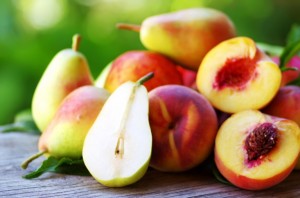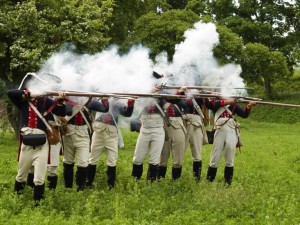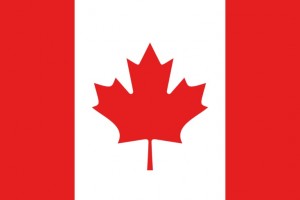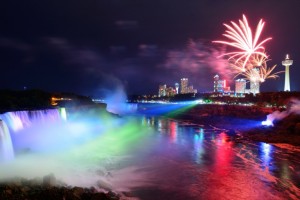
For a while now, the Niagara region has been a destination for oenophiles, but increasingly, cheese fans are finding the place a wealth of flavor as well. The artisanal cheese scene is flourishing in the Niagara Peninsula, and here is a look at one of the area’s crown jewels: the Upper Canada Cheese Company.
Origins
Founded and built by Wayne Philbrick, the Upper Canada Cheese Company got its start when Philbrick’s summer travels though Quebec awakened his interest in artisanal cheese. A construction contractor who had also tried his hand at winemaking, ever since that summer trip, Philbrick has been gung-ho over cheese. He has undergone extensive training as a cheesemaker, and, today, his cheese shop not only sells the two artisanal cheeses they produce in-house, but the Upper Canada Cheese Company’s store also features scores of products from local and international makers, making it a great stop for visitors to the Niagara region who want to know more about the foods, wares, and cheeses produced in Niagara and throughout Ontario.
The Cheese
The skilled and careful cheese makers at the Upper Canada Cheese Company make two types of cheese, and they are both of the semi-soft variety. One is called Comfort Cream, and it is remarkably similar to a French Camembert. The other is called Niagara Gold, and it is based on a type of cheese made by Trappist monks in France’s Loire Valley. Occasionally, a ricotta cheese is also made and sold.
The Milk

Bred there by militant monks charged with keeping pirates at bay, the Guernsey line developed from two French cattle breeds: Norman Brindles and Froment du Leons. First introduced to the Americas in 1840, the Guernsey line became a part of the Canadian landscape when a bull and two heifers were brought into the country in the middle of the 19th century.
For anyone who delights in cheese, a stop at the Upper Canada Cheese Company is a must. They are located in Jordan Station — just a short 20-minute drive from Niagara Falls — and are open seven days a week.

 Whether you’re at work or going back to graduate school, autumn can be a very busy and hectic time, as the easy, breezy skin of summer’s lull is finally and fully stripped away. Add the holiday squeeze of Thanksgiving, Christmas, Hanukkah, and New Year’s to that, and the months of November and December can begin to feel downright overwhelming for some of us.
Whether you’re at work or going back to graduate school, autumn can be a very busy and hectic time, as the easy, breezy skin of summer’s lull is finally and fully stripped away. Add the holiday squeeze of Thanksgiving, Christmas, Hanukkah, and New Year’s to that, and the months of November and December can begin to feel downright overwhelming for some of us. Unlike most parades, the Port Colborne Annual Lighted Santa Claus Parade takes place in the evening, which transforms the seemingly commonplace experience of attending a parade into a magical experience that’s perfect for the holiday season. Head to Port Colborne on December 5 by 5:30 p.m. to get a good spot, and bring along some hot cocoa or cider, as well as some non-perishable canned goods if you’d like — the Port Colborne Optimist Club will be collecting them along the parade route. The parade gets underway by 6:30 p.m., and after it’s over, you’ll have plenty of time to enjoy Port Colborne’s charming downtown. Grab a bite of international and Asian-inspired fare at The Smokin’ Buddha after the parade, or, if you get to town early enough, grab a fresh fish lunch or afternoon snack at Minor Fisheries.
Unlike most parades, the Port Colborne Annual Lighted Santa Claus Parade takes place in the evening, which transforms the seemingly commonplace experience of attending a parade into a magical experience that’s perfect for the holiday season. Head to Port Colborne on December 5 by 5:30 p.m. to get a good spot, and bring along some hot cocoa or cider, as well as some non-perishable canned goods if you’d like — the Port Colborne Optimist Club will be collecting them along the parade route. The parade gets underway by 6:30 p.m., and after it’s over, you’ll have plenty of time to enjoy Port Colborne’s charming downtown. Grab a bite of international and Asian-inspired fare at The Smokin’ Buddha after the parade, or, if you get to town early enough, grab a fresh fish lunch or afternoon snack at Minor Fisheries. Whether you’re a serious student of yoga or just beginning what you hope will be a life-long practice, going on vacation can throw a wrench into the spokes of your well-meaning routine. After all, isn’t that why we go on vacation in the first place? To rest from our labors, reawaken our delight in the uncommon, and jolt ourselves out of our habitual endeavors? Unlike many of the habits of daily life, however, yoga isn’t something that clouds our vision or adds stress. Instead, it brings the practitioner more fully into the present, which actually makes it the perfect companion to a vacation.
Whether you’re a serious student of yoga or just beginning what you hope will be a life-long practice, going on vacation can throw a wrench into the spokes of your well-meaning routine. After all, isn’t that why we go on vacation in the first place? To rest from our labors, reawaken our delight in the uncommon, and jolt ourselves out of our habitual endeavors? Unlike many of the habits of daily life, however, yoga isn’t something that clouds our vision or adds stress. Instead, it brings the practitioner more fully into the present, which actually makes it the perfect companion to a vacation. A teacher who found her way to yoga first via the practice of Kundalini Yoga, Diane Manjeet Herring opened Shine On Yoga in Niagara Falls in 2011. A deep interest in yoga as therapy has driven and continues to drive her practice and instruction, and she is a tireless advocate of yoga for everyone, regardless of age, income, or ability. Especially if you’re new to the practice or have worried about past injuries or limitations, taking a class at Shine On while you’re vacationing is a great idea. The yoga studio is beautiful and welcoming, and a wide variety of different types of yoga classes are available. Shine On Yoga also offers a free yoga class for the community and visitors now and again at the Niagara Falls Museum.
A teacher who found her way to yoga first via the practice of Kundalini Yoga, Diane Manjeet Herring opened Shine On Yoga in Niagara Falls in 2011. A deep interest in yoga as therapy has driven and continues to drive her practice and instruction, and she is a tireless advocate of yoga for everyone, regardless of age, income, or ability. Especially if you’re new to the practice or have worried about past injuries or limitations, taking a class at Shine On while you’re vacationing is a great idea. The yoga studio is beautiful and welcoming, and a wide variety of different types of yoga classes are available. Shine On Yoga also offers a free yoga class for the community and visitors now and again at the Niagara Falls Museum. For many people, the holidays are often more stressful than fun, prompting many to take to the roads and skies in search of destinations where fun can be had without any feelings of accompanying obligation. However, especially for Americans who have only a short four-day weekend with which to mark their gratitude at Thanksgiving every November, getting out of town is often more trouble than it’s worth. But if you don’t venture too far out of the way, Thanksgiving can be a great holiday to experience in a new location.
For many people, the holidays are often more stressful than fun, prompting many to take to the roads and skies in search of destinations where fun can be had without any feelings of accompanying obligation. However, especially for Americans who have only a short four-day weekend with which to mark their gratitude at Thanksgiving every November, getting out of town is often more trouble than it’s worth. But if you don’t venture too far out of the way, Thanksgiving can be a great holiday to experience in a new location. Eating in the Niagara region is one of the highlights of any knowledgeable foodie tourist. The farm to table movement is alive and well in the Niagara area, which means there is plenty of local, delicious produce available for area chefs to work with — even in November. Regardless of what you like to eat, you can find an entirely new Thanksgiving menu to enjoy when you spend your last Thursday of November in Niagara. Skip the cranberry sauce, the dressing, and the turkey, and choose one of the area’s award-winning, farm-centered restaurants instead — many of which are located at area wineries, including:
Eating in the Niagara region is one of the highlights of any knowledgeable foodie tourist. The farm to table movement is alive and well in the Niagara area, which means there is plenty of local, delicious produce available for area chefs to work with — even in November. Regardless of what you like to eat, you can find an entirely new Thanksgiving menu to enjoy when you spend your last Thursday of November in Niagara. Skip the cranberry sauce, the dressing, and the turkey, and choose one of the area’s award-winning, farm-centered restaurants instead — many of which are located at area wineries, including: Summer is great for fruity frozen drinks; winter needs deep, warming cocktails; but autumn is indubitably the beer season. Fortunately, Niagara Falls is an excellent destination for a beer-cation, especially during September and October when the regional hops fields are being harvested and the local brewers are hard at work fermenting new ales and lagers. This year, you shouldn’t bother trying to scrounge up tickets to Belgium or Germany — Oktoberfest is
Summer is great for fruity frozen drinks; winter needs deep, warming cocktails; but autumn is indubitably the beer season. Fortunately, Niagara Falls is an excellent destination for a beer-cation, especially during September and October when the regional hops fields are being harvested and the local brewers are hard at work fermenting new ales and lagers. This year, you shouldn’t bother trying to scrounge up tickets to Belgium or Germany — Oktoberfest is  If these two events don’t provide nearly enough ales and lagers, you can round out your Niagara beer-cation with a tour of the Niagara beer trail. Though the region is known better for its excellent wineries, Niagara is quickly becoming a craft brewer’s paradise due to the plethora of fresh ingredients for beer-making.
If these two events don’t provide nearly enough ales and lagers, you can round out your Niagara beer-cation with a tour of the Niagara beer trail. Though the region is known better for its excellent wineries, Niagara is quickly becoming a craft brewer’s paradise due to the plethora of fresh ingredients for beer-making. The entire Ontario region is known throughout Canada and North America as an area that excels in producing fruit and vegetables of a wide variety, but it’s the area’s tender fruit production that keeps Canada in everything from peaches and pears to cherries and plums during the summer and autumn months. And with orchards and farms scattered all over the countryside, Ontario’s bounty is almost always exceptional.
The entire Ontario region is known throughout Canada and North America as an area that excels in producing fruit and vegetables of a wide variety, but it’s the area’s tender fruit production that keeps Canada in everything from peaches and pears to cherries and plums during the summer and autumn months. And with orchards and farms scattered all over the countryside, Ontario’s bounty is almost always exceptional. Driving around the Niagara Peninsula is one of the best ways to spend an afternoon, and it’s not just because the grape vineyards are so lovely. Interspersed throughout the region are the scores of farms and orchards that keep Canada in fruit, and the meticulous care the trees and bushes are given helps account for why the area is so postcard perfect and picturesque. Don’t just get a photo at the Falls when you visit Niagara, be sure to snap a few along the roadside in front of a field of cherry trees or pear trees, too.
Driving around the Niagara Peninsula is one of the best ways to spend an afternoon, and it’s not just because the grape vineyards are so lovely. Interspersed throughout the region are the scores of farms and orchards that keep Canada in fruit, and the meticulous care the trees and bushes are given helps account for why the area is so postcard perfect and picturesque. Don’t just get a photo at the Falls when you visit Niagara, be sure to snap a few along the roadside in front of a field of cherry trees or pear trees, too.
 For lovers of classic cars, trucks, and motorcycles, there are few experiences as satisfying as attending a classic car show, where the pleasure of seeing a rare, mint condition vehicle firsthand is a common occurrence. Thousands of vehicle models have come and gone over the more than 100 years that have passed since Henry Ford made the personal motor vehicle a reality, and while not every single one of those vehicle models has been heralded as a standard bearer over the years, each one nevertheless carries with it the weight of both cultural history and personal memory. When it comes to feeling the wistful nostalgia of times gone by and the deep admiration elicited by world-class functional design, the classic car show is truly in a class by itself.
For lovers of classic cars, trucks, and motorcycles, there are few experiences as satisfying as attending a classic car show, where the pleasure of seeing a rare, mint condition vehicle firsthand is a common occurrence. Thousands of vehicle models have come and gone over the more than 100 years that have passed since Henry Ford made the personal motor vehicle a reality, and while not every single one of those vehicle models has been heralded as a standard bearer over the years, each one nevertheless carries with it the weight of both cultural history and personal memory. When it comes to feeling the wistful nostalgia of times gone by and the deep admiration elicited by world-class functional design, the classic car show is truly in a class by itself. 4. Last Chance Car Show and Swap Meet
4. Last Chance Car Show and Swap Meet For the history buff, spending a day or week among the dusty annals of a library’s special collection sounds like a vacation made in heaven, whereas, for most of us, such an endeavor is a lot less fun. Regardless of its importance in the overall scheme of things, for the majority of people, any engagement with “history” needs to involve some pretty hefty razzle dazzle to attract and hold our attention, which is why history buffs invented historical reenactments, which are a fantastic way that history gets preserved and learned.
For the history buff, spending a day or week among the dusty annals of a library’s special collection sounds like a vacation made in heaven, whereas, for most of us, such an endeavor is a lot less fun. Regardless of its importance in the overall scheme of things, for the majority of people, any engagement with “history” needs to involve some pretty hefty razzle dazzle to attract and hold our attention, which is why history buffs invented historical reenactments, which are a fantastic way that history gets preserved and learned. Another engagement during the War of 1812, the Battle of Chippewa took place nearly two years after the Battle of Fort George, and while it resulted in another American victory over the British — and caused significant British losses — it nevertheless failed to allow the Americans to make much headway in the war overall. This July 5 marks the anniversary of that battle, and reenactors will take to the field to relive it at 2 p.m.
Another engagement during the War of 1812, the Battle of Chippewa took place nearly two years after the Battle of Fort George, and while it resulted in another American victory over the British — and caused significant British losses — it nevertheless failed to allow the Americans to make much headway in the war overall. This July 5 marks the anniversary of that battle, and reenactors will take to the field to relive it at 2 p.m. Canada is the second largest country in the world by land mass, but it’s estimated that as many as 75 percent of the nation’s 35 million residents live within 100 miles of the border it shares with the United States. A former colony of both the French and the British, Canadian culture involves plenty of carryover from those two nations as well as the indigenous people groups and immigrants who have called Canada home over the years.
Canada is the second largest country in the world by land mass, but it’s estimated that as many as 75 percent of the nation’s 35 million residents live within 100 miles of the border it shares with the United States. A former colony of both the French and the British, Canadian culture involves plenty of carryover from those two nations as well as the indigenous people groups and immigrants who have called Canada home over the years. Because of the wide variety of people who visit Canada and call it home, Canadians tend to be a pretty progressive and welcoming bunch. Universal health care, a commitment to sustainable agriculture, legal same-sex marriage, the abolition of capital punishment, religious freedom — these realities and others like them show Canadians’ commitment to progressive ideals.
Because of the wide variety of people who visit Canada and call it home, Canadians tend to be a pretty progressive and welcoming bunch. Universal health care, a commitment to sustainable agriculture, legal same-sex marriage, the abolition of capital punishment, religious freedom — these realities and others like them show Canadians’ commitment to progressive ideals.